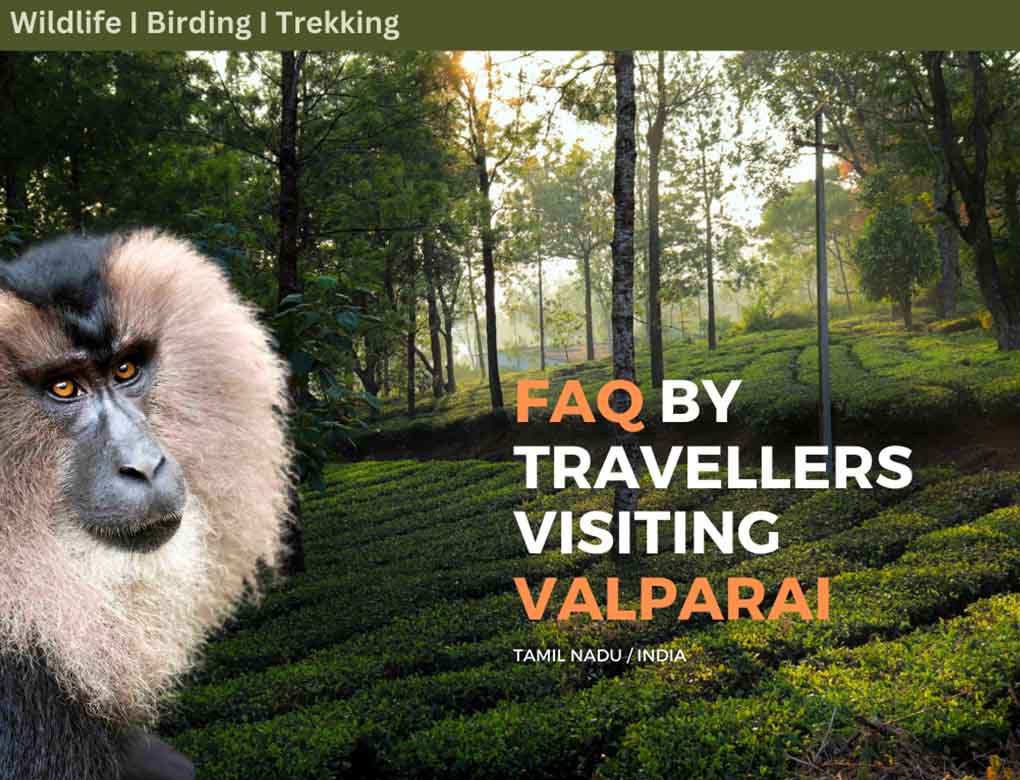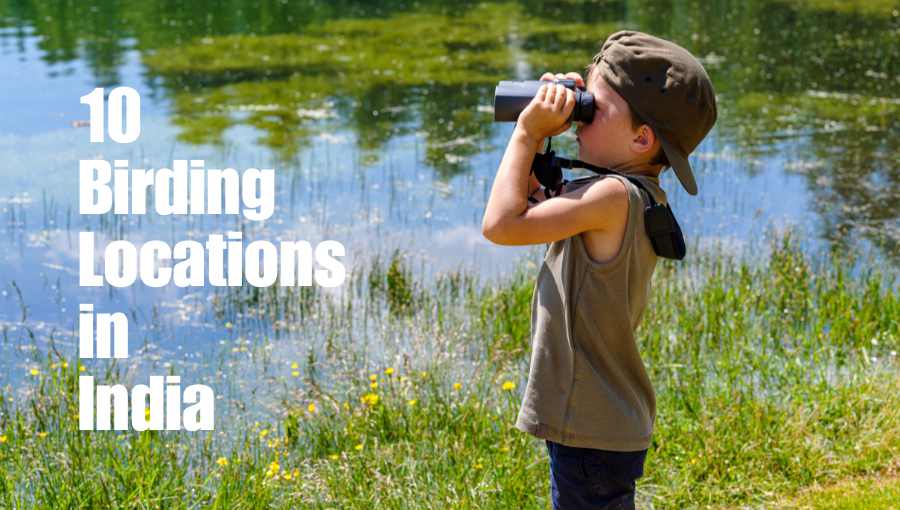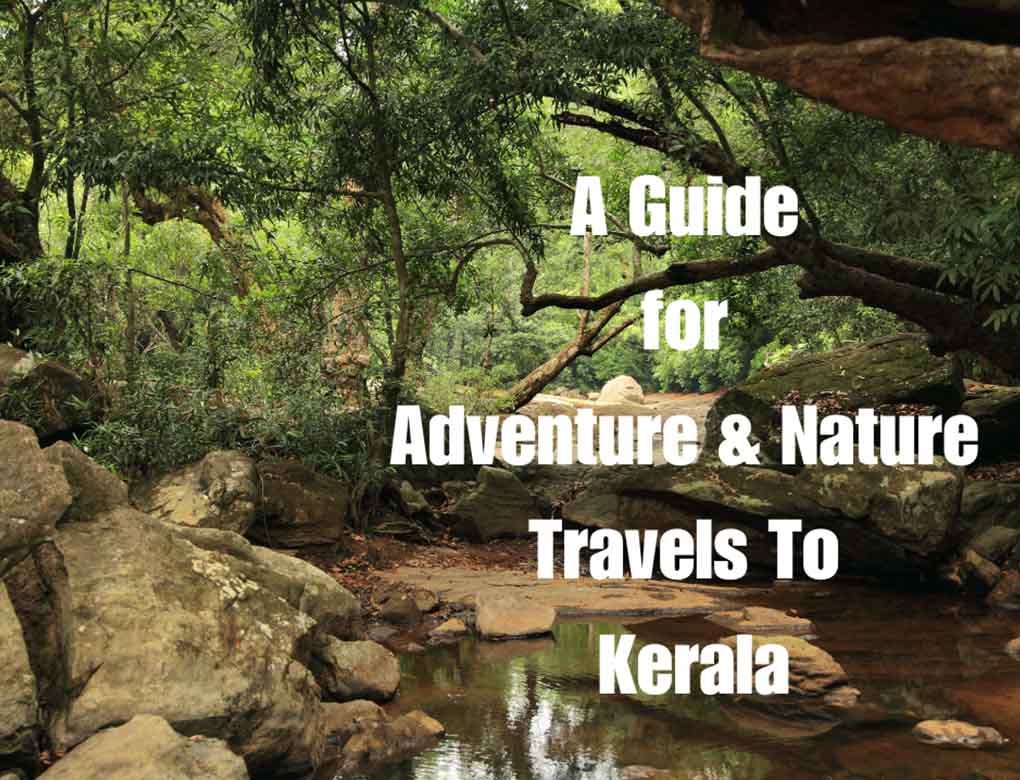
Ten Best Birding Destinations in India

- May 2, 2023
- admin
- 7:25 am
The incredible diversity of India is also well reflected in its wildlife richness. As a birder, your challenge is accessing these creatures’ remote habitats to observe them. Traversing India by road can be daunting and exhausting with its vast size. From local challenges to regulatory and operational hurdles, venturing out to explore the wildlife of India can seem a demanding task.
This blog is for birdwatchers and wildlife photographers. We aim to provide helpful suggestions and advice for those exploring natural wonders in Asia and beyond. If your adventure is for seeing rare bird species or capturing stunning images of wildlife, an expedition on this land will be rewarding and memorable.
India’s diversity and uniqueness make it an essential destination for wildlife and bird enthusiasts. India’s size, diverse geographical conditions, and two mountain ranges, the Himalayas and the Western Ghats contribute to its incredible biodiversity.
You might have seen glossy travel brochures boasting that India has everything from snow-capped mountains in the north to great plains in the northeast, desert and arid lands in the west, rain forests in the south, and pristine beaches in Andaman. Though these brochures are touristy, it is very accurate in reality, including when it comes to birdlife and birding.
India has 500 plus species of mammals as residents here, including many endangered and endemic primates. Out of the 1300 species of birds, 81 of them are endemic. While it’s impossible to see all of them on a single trip or even over several years, any travel or safari to the Indian forests will undoubtedly be enriching and memorable.
However, knowing what you want to achieve on your trip is essential before you make any plans. The success of any nature expedition depends on how well you understand what to expect. So, firstly ensure you know what you want to see and experience on your trip before contacting your guide or agent.
Which are the top 10 Birding and Bird Photography Locations in India?
1. Bharatpur, Rajasthan
Bharatpur is about 220 kilometres west of Delhi and is located in Rajasthan. You can travel by road or train from Delhi. I suggest a road trip because the expressway is very good and the chances of seeing some birds on the way are also high. Keoladeo Bird Sanctuary, also known as the Bharatpur Bird Sanctuary, was a waterfowl hunting area of the Kings of Bharatpur in the past. This primarily marshy Waterland is a well-known habitat for migratory waterbirds, songbirds, and breeding migrants.
My first trip to Bharatpur was in 2008, and the trip after ten years surprised me with the increased number of birds seen and the general public, especially youngsters, visiting this part of nature experiences. If you are a twitcher, this place may not add many to your life list, but Bharatpur is an excellent place to begin your birding life or master your bird photography skills. I recommend spending at least two nights in Bharatpur.
My top picks here will be the Black-rumped Flameback, Yellow-crowned Woodpecker, Marshall’s Iora, Dusky Eagle Owl, and Spotted Owlet. You can also expect migrant eagles such as Eastern Imperial, Greater Spotted, Steppe, and Indian Spotted Eagles. Your guide may take you to the bund area, a bit interior, if you are keen on seeing more ducks.
Bonus: If you can keep half a day for seeing the Taj Mahal, which is about one hour away in Agra, it’s better to buy tickets in advance and schedule it properly to avoid any impact on your birding time.
You may not require a birding guide in Bhaktapur, especially if you only want to see birds within the park. It is better to hire one of the rickshaw drivers from the gate, who are excellent and experienced guides.
A short video with soothing music introduces India’s birds and wildlife (4 Min).
2. Chamabal, Madya Pradesh.
Since you have already reached Bharatpur, it’s a good idea to visit Chambal for Indian Skimmers. It is about 100 km away and worth visiting. Chambal is a large forest area, and you will be doing a river cruise that will take a few hours to complete.
If you visit during the right season, spotting Indian Skimmers will not be an issue. You will likely see Ganges River dolphins and crocodiles during this boat cruise. A decent place to stay here is expensive, so ask your guide if you can manage it as a day trip to Chambal. You can easily combine the Chambal excursion and the Taj Mahal in a trip and spend a night in Agra. I found this to be more economical.
If you want to see tigers and not visit other parts of India on this trip, you can proceed to Ranthambore Tiger Reserve. It is my favourite place in India to see Royal Bengal Tigers and Leopards.
3. Kumaon Hills ( Sattal, Pangot and Jim Corbet), Uttarakhand
This is my favourite place in the lower Himalayas for birding and wildlife photography. The first port of arrival for this expedition is Nainital. Travelling by road from Delhi can take 8-9 hours. Some of them may find travelling by train more comfortable. Whatever means you travel, I recommend going straight up to Pangot (14 km from Nainital) for the first-night stay in the Kumaon hills. Pangot is at 6500 feet, almost similar in height to Nainital. Nainital is a popular, touristy hill station, while Pangot is a humble village and less crowded.
You will see many Himalayan species in the forests in and around Pangot. One of my memorable encounters here was with the Cheer pheasant; what an incredible bird! But it is not a commonly spotted one here. Searching for a Cheer pheasant here is challenging, and seeing one is a matter of luck too. You are likely to see Kalij and Khalij pheasants here as well. You can take stunning photos of red-billed blue magpies and many species of laughing thrushes here.
A two-night stay here is recommended.
Your next destination will be Sattal, which is situated at a lower elevation (about 4000 feet). But the dip in height will present us with different habitats and birds here. Sattal is a well-developed birding destination. You will see experienced guides and dedicated birding lodges here. Some of them even have their bird hides for photographers. Tal means lake in the local language. If you are here in the late winter season, you will likely visit the “studio,” a spot near the lake where bird photographers congregate to shoot photos of many species of birds that visit for bathing and drinking water.
I recall an encounter I had here on the road leading to the lake with a young leopard. It happened at a place and time when both of us were not expecting each other. We were both startled. The leopard did not wait to say hello and escaped to the woods momentarily. You are likely to see Yellow-throated martin also here.
I recommend spending two-three nights here.
PS: I recommend booking bird hides well in advance, as the season can often be fully booked.
Jim Corbett
India’s most famous national park and tiger reserve in the name of the legendary English hunter turned conservationist is a must-visit place in the Himalayas. It is located about 90 kilometres from Sattal, and the drive may take up to 3 hours. Ask your guide to search for tawny fish owls and common green magpies on the way.
Jim Corbett’s average elevation is about 2500 feet. It is home to regional migratory birds that go to South India to escape the winter in the Kumaon hills. One good example of it is the Indian Pitta. If you visit in winter, you will unlikely see them as they enjoy sunny times in South India. But it is the time when many high-elevation birds come downhill to escape the snow in the mountains. Jim Corbett is good for hornbills (Great Indian Hornbill) and raptors as well. Please try to locate the long-billed thrush, as it is an excellent bird to have on your life list, even for seasoned birders. It would be best to spend the afternoon on the Kosi river beds. I vividly remember spotting Ibis Bill, wall creeper, and Brown Dipper here.
The biggest attraction here is undoubtedly tigers and elephants. If you are into big cats, you will enjoy Jim Corbett. When you book jeep safaris, ensure it covers Dhikala trails, as it is the best route to see Tigers.
I suggest you keep 2-3 nights for Jim Corbett.
4. Kaziranga National Park, Assam.
This is in Assam, and the nearest Airport is at Guwahati (215 kilometres). It takes almost six hours to cover the distance by car. Kaziranga is a unique habitat dominated by grasslands filled with enormous grass. As you can see in the attached video on this blog, even elephants can hide well under these grasses. It is an excellent place to see rare birds such as Bengal Florican, Greater and Lesser Adjutants, Dusky Owls, and Indian Hornbills. Tea gardens near the national park are known for Blue-napped Pitta. I met a local birder who claimed to have seen Hooded and Blue-winged Pitta in Assam, but I cannot comment on it.
Kaziranga is special because of its unique resident – the single-horned Indian Rhinoceros. Other key mammals to see here are Water Buffaloes, Royal Bengal Tiger, Hoolock Gibbon, Swamp Deer, etc.
If you are keen on spotting tigers, I recommend focusing on the central zone as it is their best habitat zone. If you have time, I suggest travelling to Nameri (90 kilometres) as it is the only reasonably reliable habitat for White-winged ducks, the state bird of Assam. But my recent trip to Nameri yielded a negative result. Many others saw the bird on the previous and following days.
Safari in Kaziranga is done in a dusty environment. So you must ensure you have a mask to cover your face and something to protect the camera from dust.
I suggest at least three nights for Kaziranga. If you extend your trip to Nameri, you must account for two additional nights.
5. Latchen and Tibetan Plateau, Sikkim
Embark on an exhilarating expedition to the Latchen and Tibetan Plateau in Sikkim, a small but breathtaking state nestled in the Himalayas that borders China. You have the option to begin your ascent from either Gangtok or Dibrugarh in Assam. Your first stop is the charming village of Lachen, situated at 8,500 feet. The journey from Dibrugarh can be pretty lengthy, taking up to 10 hours to cover 250 km. Alternatively, you can fly to Gangtok and then travel to Lachen, which takes about 5 hours to cover 125 km. It’s important to note that it’s best to fly in and out of Dibrugarh, as Gangtok’s air connectivity can be unreliable.
Lachen is an acclimatisation point where you can spot Grandala during winter and explore the forests for honey and mountain birds. However, the real birding adventure begins further up. To see Tibetan endemics, you must go to Gurudongmar Lake, which is approximately 18,000 feet. It’s crucial to properly acclimate to avoid altitude sickness. It’s worth noting that this area is heavily militarised, and entry is restricted to Indian passport holders
. The key species you should aim for here are Hill Pigeon, White-rumped Snow Finch, Rufous-necked Snow Finch, Black-necked Snow Finch, Black-winged Snow Finch, Black-beaded Mountain Finch, Great Rosefinch, Horned Lark, White-winged Redstart, Ground Tit, Little Owl, etc. In addition, you will likely see some unusual mammals living in such an inhospitable environment, such as Tibetan Gazelle, Himalayan Ibex, Tibetan Sandfox, Argali, etc.
Travelling to these places requires advanced preparation. Mountain passes may get closed if snowfalls become heavy, so you must ensure you are with experienced guides.
6. Eagles Nest & Mishmi Hills in Arunachal Pradesh.
Eagles Nest National Park is a destination on most birdwatchers’ lists, but many of them procrastinate the trip due to its isolated location, rugged terrain and logistic and infrastructure difficulties. The national park is located in Arunachal Pradesh in North East India and has an altitude range from 4000 ft to 10700 ft. The availability of habitats in varying altitudes makes this national park an avian hotspot.
The nearest Airport is Tezpur ( You can find flights from Kolkata), about 120 Kilometers from the national park, or Guwahati airport, 225 Km away. Either way, reaching your destination will take 8-10 hours. I have never used the Tezpur route, and selecting the Airport will be based on your guide’s accommodation and connecting flight availability. If you are arriving by train Tezpur may be the best option. Whichever route you take, the drive will be challenging and tiring. Eagle Nest is not for the faint-hearted.
The biggest problem birders always face here is quality accommodation. There are two camping accommodations managed by local tribes, namely the lama camp and the bamboo camp, open to visitors. But, of course, before we comment on the state of the camping facilities, we must sympathise with the remoteness of the location, availability of materials etc.
Bird life is rich and plenty. Many exotic species are hard to find elsewhere here, such as Blyths and Temincks Tragopans, Beautiful nuthatch, Rufous-necked hornbill, recently discovered Bugun Liocichia,
Birding here includes roadside birding, short drives before hitting the next trail and scanning mountain passes. Forests here are semi-tropical and thick. Photographers find this place very challenging. Eagle’s Nest is a vast area, and the availability of birds will depend on the time of your visit and the areas within the national park you will be visiting. The key spots you can consider visiting here are Bhalukpong-Tenga, Tenga-Ramalingam, Eangle Nest Pass, Chakoo, Khellong and much lower Doimara.
If you think Eagles Nest is challenging, consider exploring Mishmil Hills instead. It is also in Arunachal Pradesh, and many birding spots here are 3500-12500 feet levels. The nearest Airport is Dibrugarh, which is 185 km away from the Mishmi Hills. Mishmil Hills is also a biodiversity area, less challenging than Eagles Nest and better for bird photography. March to May is the best time to visit both places for birding.
7. Bhitarkanika, Odisha.
This is a lesser-known gem for birding and wildlife enthusiasts in India, situated around 170 km from Bhuvaneshwar (with a driving time of 5-6 hours). It is a habitat built around water bodies and the Bay of Bengal, with most of the area consisting of mangrove forests and marshlands. The main birding activity involves a boat cruise along the river and its tributaries to spot shore birds and water birds.
I recommend this destination for its diverse range of kingfisher species and mangrove pitta population. Where else can you see Brown-winged Kingfisher, Collared Kingfisher, Common Kingfisher, Pied Kingfisher, Black-capped Kingfisher, Stork-billed Kingfisher, and Ruddy Kingfisher in one go? This location is also home to sea eagles and many migratory birds, with highlights including Fishing Cats and a significant number of saltwater crocodiles.
A two nights stay will be enough to cover the main habitats in Bhitarkanika.
8. Andaman Archipelago.
Did you know Andaman, a part of India, is closer to the Malayan bio-zones? You can easily fly to Port Blair from Kolkata or Chennai, which takes about two hours. Andaman’s vegetation and forest types vastly differ from mainland India, resulting in diverse fauna. Nicobar Ground of Islands, which is part of the Andaman Archipelago, is even more isolated and home to many endemics. Currently, 29 species of birds are known to us as endemic to the archipelago.
Unfortunately, Nicobar does not have an airport yet, so the only options are unreliable ships or helicopters for transportation. So planning a trip to Nicobar is not a practical one in most times. However, the Andaman Islands itself is also an excellent location for bird watching.
First, you can visit Mount Harriet National Park to have an introduction to the biodiversity of the region. Then, explore Chidiya Tappu, Little Andaman, and other areas to find endemics and regional endemics such as the Andaman Green-pigeon, Andaman white-headed Starling, Andaman drongo, Andaman Bulbul, Andaman Cukoo-dove, Andaman Hawk owl, Andaman Crake, Andaman Woodpecker, Andaman Serpent Eagle, etc.
I recommend you keep four nights for Andaman. Please note that trip to the Nicobar group of Island is omitted here.
9. Thattekkad & Munnar, Kerala.
The charming village of Thattekkad is situated approximately 35 km away from Cochin International Airport, surrounded by lush forests. It gained global recognition when Dr Salim Ali, a renowned Indian ornithologist, declared it as his favourite bird habitat in southern India. As bird enthusiasts, one must explore the nearby forests and woodlands to witness the diverse birdlife thriving in such a small area. Almost half of the western Ghats endemics (28) can be found here, with around 300 species of birds recorded in the region.
The birding season commences in November when migrants from the Himalayan basin arrive to spend the winter. Key species to look out for include the Malabar Trogon, Malabar Wood Shrike, Legge’s Eagle, Malabar Parakeet, Malabar Starling, Malabar Hornbill, White-bellied Tree-pie, and the Ceylon Frogmouth. You can also spot up to 9 owl species here, the most sought-after being the spot-bellied eagle owl. Thattekkad has now become a premier destination for birdwatchers.
Thattekkad has now become a premier destination for birdwatchers. You may need two nights here to explore the area well.
Munnar
Located on the western slope of the Western Ghats, Munnar is a stunning hill station about 126 kilometres from Cochin. After visiting the Thattekkad bird sanctuary, most birders tend to extend their trip to Munnar. This famous hill station is known for its tea gardens and spice plantations and has an average altitude of 5000 feet above sea level. We highly recommend including Munnar in your itinerary to see the maximum Western ghats species.
It offers the opportunity to spot several high-altitude endemics such as the Nilgiri wood pigeon, Nilgiri whistling thrush, Nilgiri pipit, black and orange flycatcher, white-bellied shortwing, Palani laughing thrush, and yellow-throated bulbul.
In addition to bird watching, you can also see the unique Nilgiri tahr and, if you are fortunate, the rare Nilgiri marten, which are only found in certain areas of the Western Ghats. Munnar is also a well-known destination for those who are into herpings. Herpers visit Munnar during monsoon to see endemic snakes and colourful frogs seen during the rainy season. To fully cover the various habitats of Munnar, I suggest staying for at least two nights here.
10. Ooty, Tamil Nadu.
If you’re looking for leftover endemics and other high-altitude birds of the Western Ghats, Ooty on the eastern slope is worth considering. It is a colonial tea plantation area situated at about 7000 feet. Although the climate of Ooty is somewhat similar to that of Munnar, you’ll get to see different Western Ghats’ endemics here. If you’re interested in birdwatching, the Nilgiri blue robin, Indian blue robin, Indian blackbird, Nilgiri sholakily, Nilgiri flycatcher, and Kashmiri flycatcher are among the main attractions in Ooty.
Popular birding locations include Dobabetta, Ooty botanical gardens, and SIMS Park. If you have enough time, you can arrange a day trip to Masangudi. It is a destination at a lower elevation, and the species here differs from that of Ooty. For mammal enthusiasts, searching for the Indian gaur and possibly spotting leopards near Ooty are other exciting activities to consider.
You may need to spend at least three nights here to cover all the birding locations in Ooty and Masangudi.
If you are looking for experienced birding/photography tour guides, www.nestindiabirding.com can be a good place to check. It is a collective of birding guides in India.
Latest Post


FAQ By Nature Travellers Visiting Athirappally

FAQ By Nature and Adventure Travellers Visiting Kerala
SEARCH TOURS & GUIDES
Sabu Kinattukara is a passionate birdwatcher, wildlife photographer, and adventure travel consultant with over a decade of experience exploring and documenting the beauty and diversity of Asia and Africa. Sabu has gained extensive knowledge about the natural world through his numerous travels and profound affection for nature. He is very skilled at creating art that inspires people to explore themselves and discover new things.. He advocates local experience travel and always encourages travellers to hire local guides and stay in local accommodations. He believes that this is one way every traveller can contribute to the development of the destination they are visiting. With expertise in adventure travel and detoxing tours, Sabu provides valuable tips and resources for planning unforgettable experiences that connect with the wonders of the planet. If you are interested in adventure travel or nature travel in Asia, please be a regular reader of his blogs and a subscriber to his vlogs.

